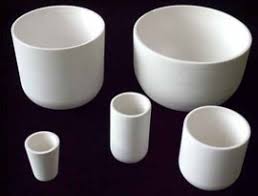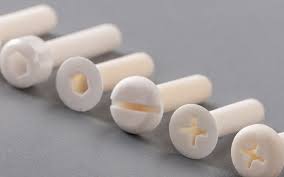- Alumina
- Boron Nitride
- Zirconia
- Other Ceramics
- Applications
- Contact

There are many kinds of stabilized zirconia, for example, Nobel Procera Zirconia, Nobel Biocare; Lava/Lava Plus, 3M ESPE; In-Ceram YZ, Vita; Zirkon, DCS; Katana Zirconia ML, Noritake; Cercon ht, Dentsply; Prettau Zirconia, Zirkonzahn; IPS e.max ZirCAD, Ivoclar Vivadent; Zenostar, Wieland.

Pure zirconia is found in three allotropic forms: monoclinic, which is stable up to 1,170°C, where it transforms to tetragonal, and then cubic when the temperature exceeds 2,370°. The tetragonal to monoclinic transformation is accompanied by a shear strain and large (4%) volume increase. This volume increase can close cracks, leading to large increases in fracture toughness of the material. Using this transformation toughening in practice requires that the tetragonal or cubic phases must be stabilized at room temperature by alloying pure zirconia with oxides such as yttrium, magnesium, calcium, and cerium. These elements will fully or partially stabilize either of these phases. A clas-sification of zirconia ceramics has been proposed according to their microstructure as fully stabilized zirconia (FSZ), partially stabilized zirconia (PSZ), and tetragonal zirconia polycrystals (TZP). In FSZ, zirconia is in its cubic form and contains more than 8 mol% yttrium oxide (Y2O3). PSZ is formed by nano-sized tetragonal or monoclinic particles in a cubic matrix, and TZPs are monolithic materials mainly of tetragonal phase stabilized most commonly with yttria or ceria. Dental zirconias are all of the TZP type, most commonly Y-TZP, as this form has the highest strength and fracture toughness after ma-chining and sintering.

Zirconia ceramic was historically employed as a prosthetic framework material to be veneered with ceramics, but it can also be used to manufacture monolithic restorations. It is available as a monochromatic uniform material, which, if needed, can be stained by infiltration. There is an increasing trend to use polychromatic (or blended) CAD/ CAM blocks and disks manufactured to imitate the variation in color from dentin to enamel (eg, Katana Zirconia ML, Kuraray). In addition, these materials are being manufactured with increasing translucency.